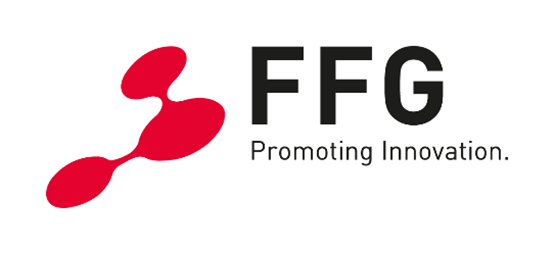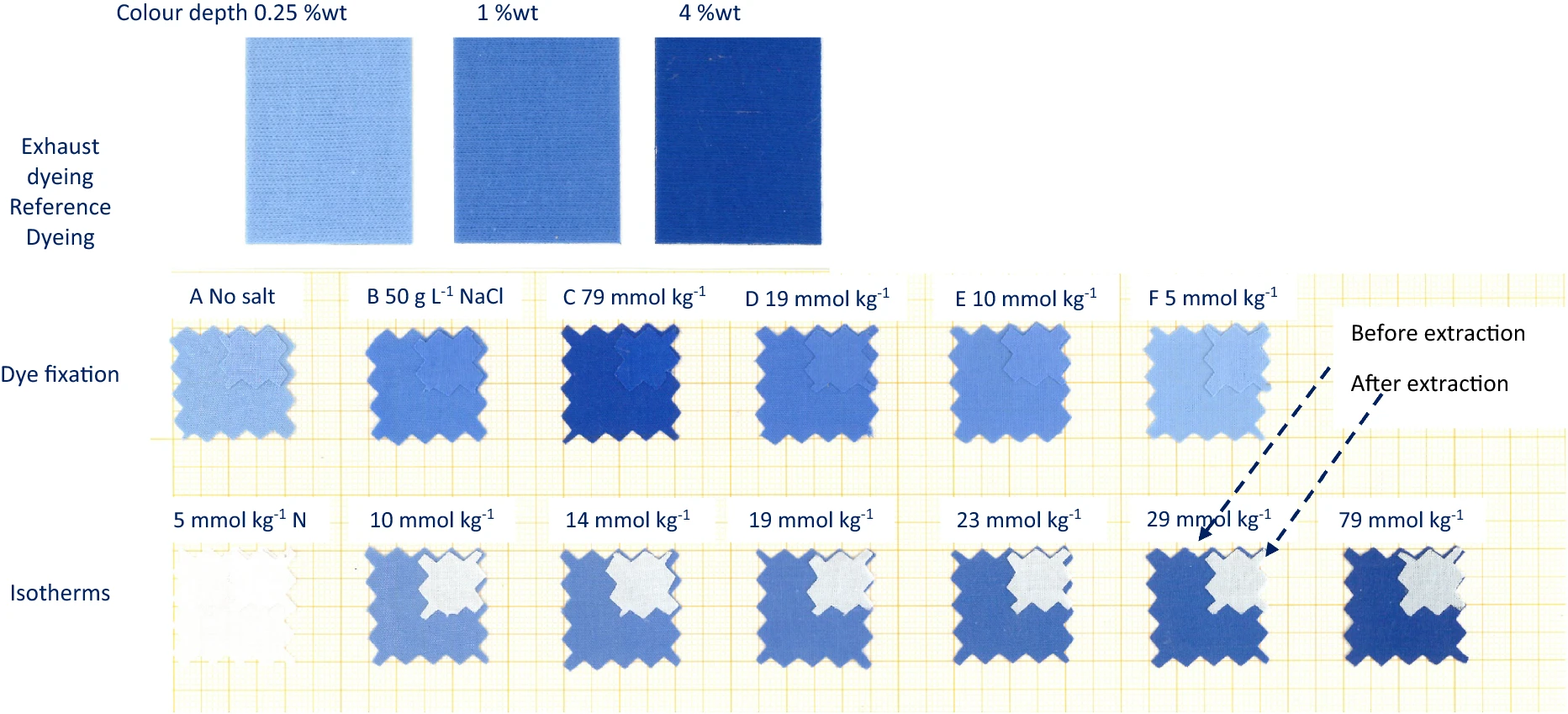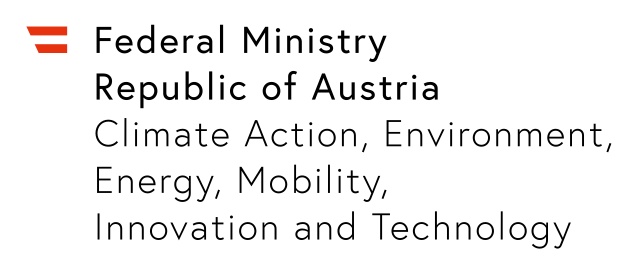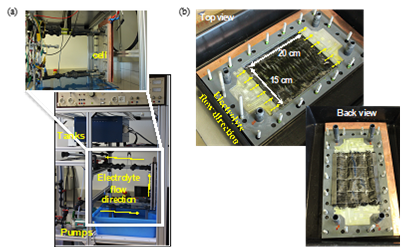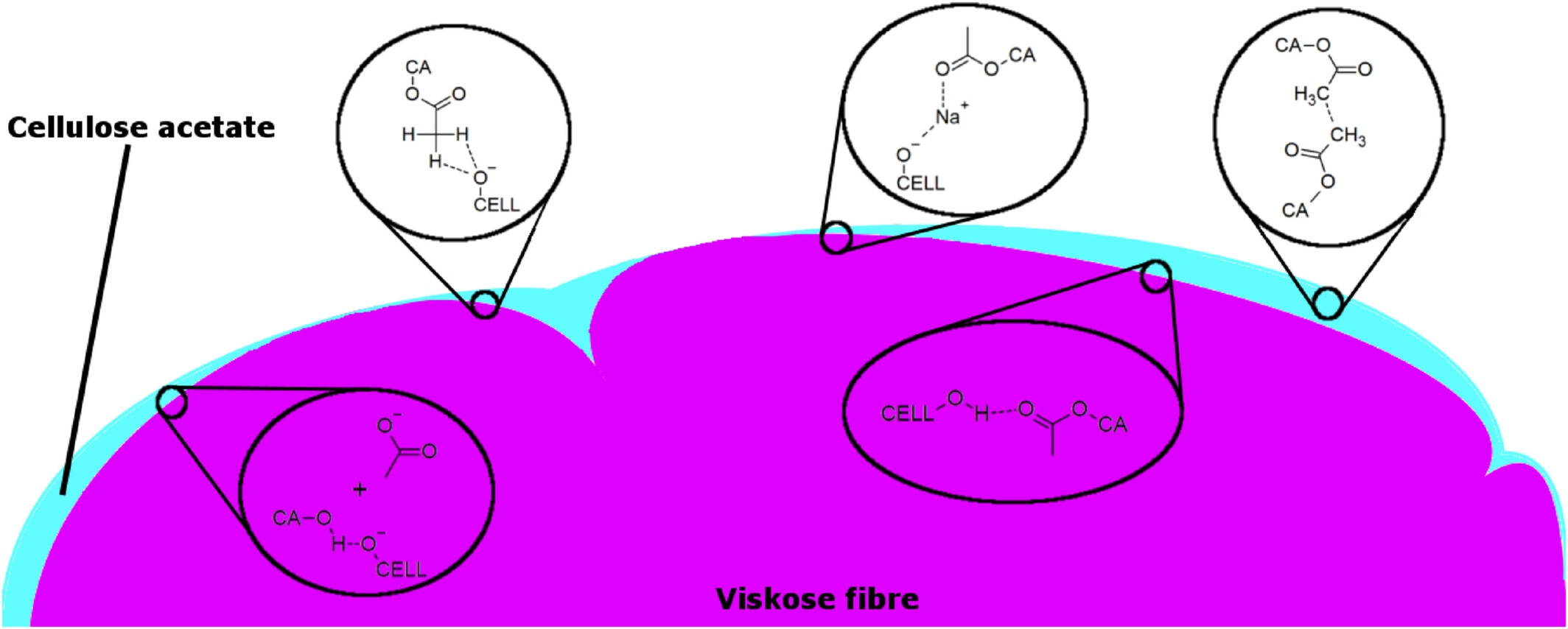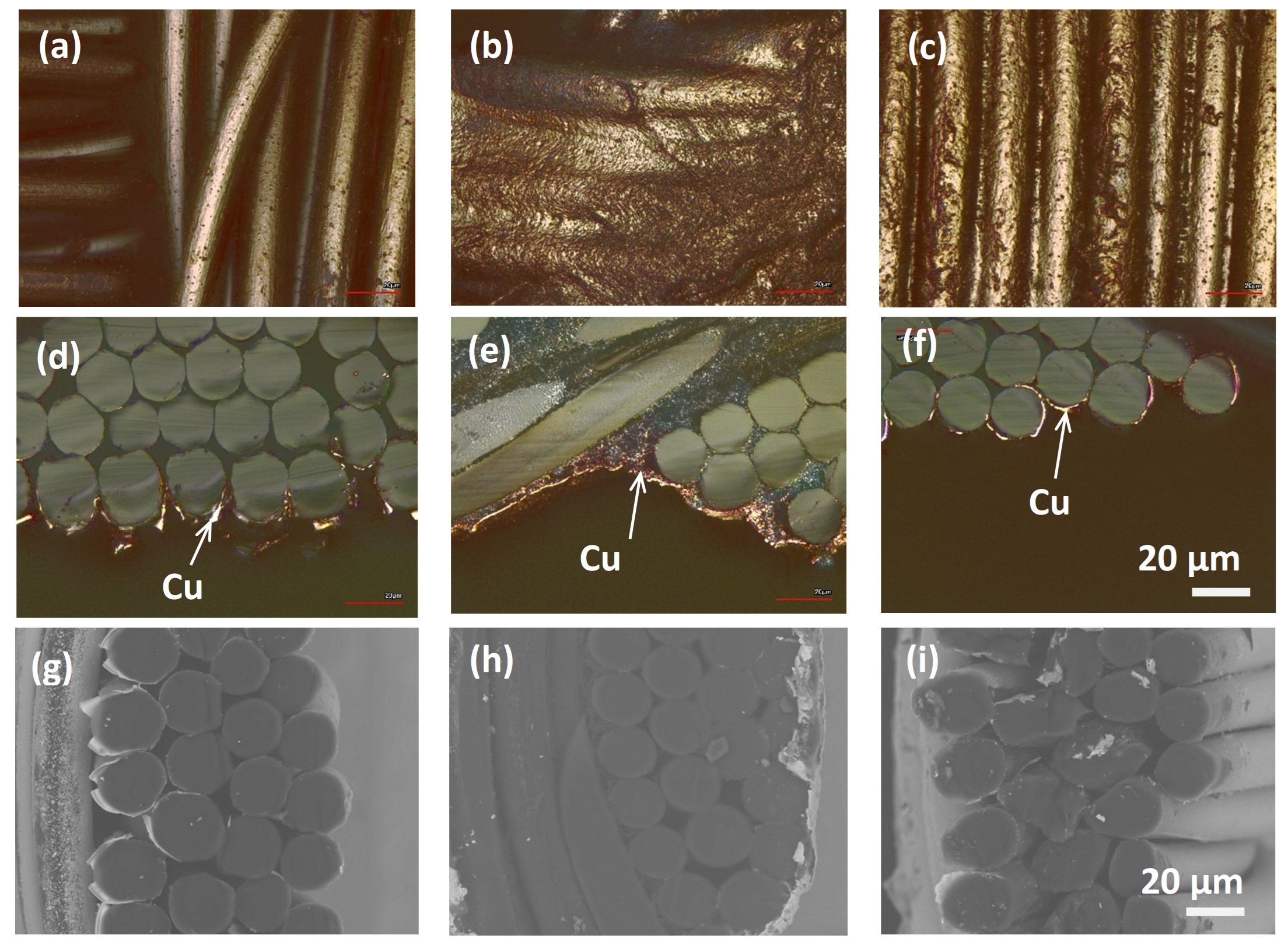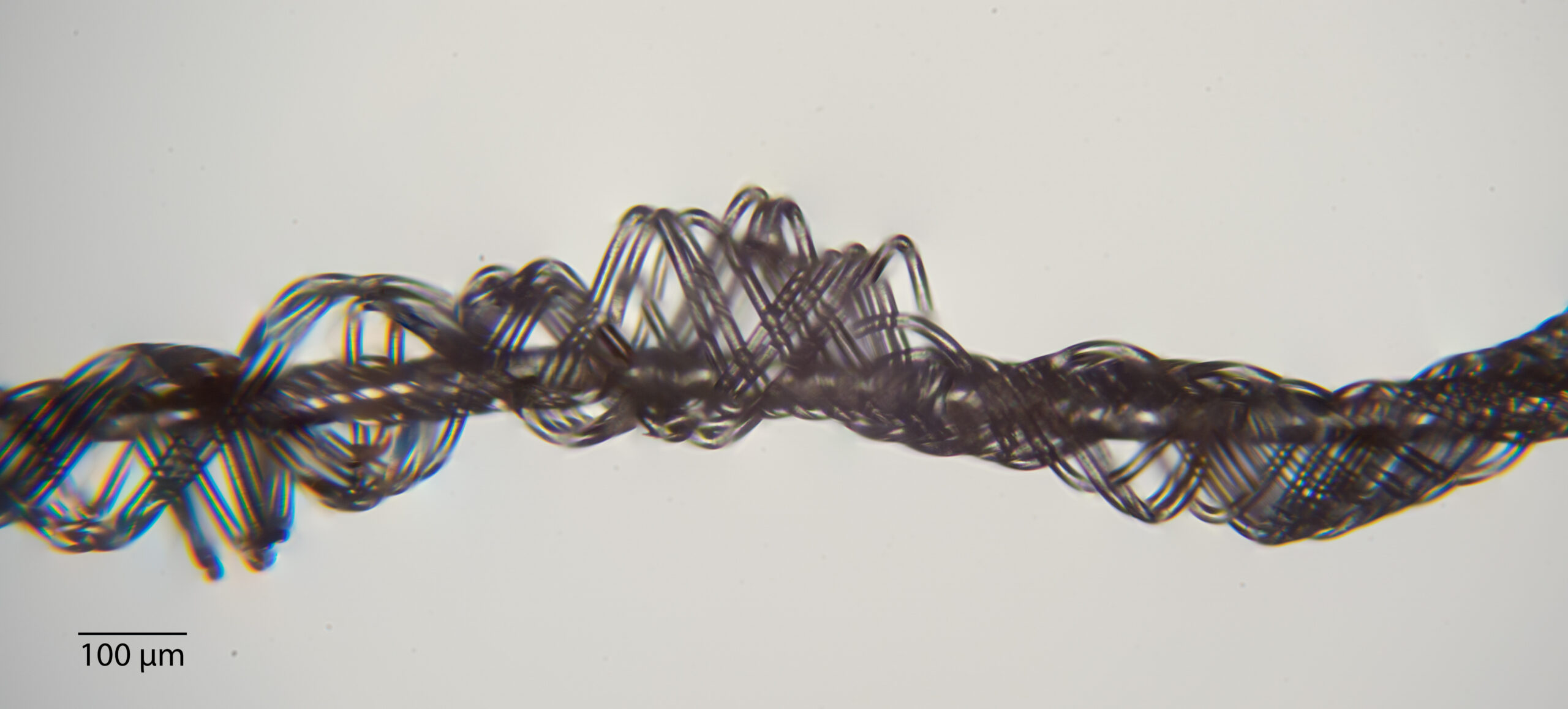Low-level cationisation of cellulose opens a chemical saving route to salt free reactive dyeing
The conventional dyeing of cellulose fibres including cotton as its most prominent representative consumes large amounts of inorganic electrolytes and fresh water, resulting in high salinity and coloured wastewater. These effluents can cause serious environmental pollution and pose a potential threat to living organisms. In order to make reactive dyeing more sustainable, different approaches are pursued, including the cationization of cellulose fibres. The use of cationic fibres allows salt free dyeing and thus helps to reduce wastewater.
Cationisation of cellulose fibres has been studied extensively as an alternative to permit salt free reactive dyeing, however chemical balances of the cationisation reaction often are not taken into account. The chemical consumption of cationization processes described in the literature is substantial and often over-compensates savings in salt in a conventional reactive dyeing. Besides very high consumption of chemicals the high level of cationization generates problems of uneven dyeings and shade variations.
In a new approach low concentrations of 3-chloro-2-hydroxypropyl-N,N,N-trimethylammonium chloride (CHPTAC) were applied in a pad batch cationisation process for cotton fabric to achieve a low level cationisation. The cationic group content of the processed fibres ranged from 5 to 79 mmol kg−1. Exhaust dyeing experiments with Reactive Blue 19 demonstrated that a salt free reactive dyeing is possible with low cationic group content 14 mmol kg−1.
The optimised low-level cationisation reduces the overall chemical consumption of the reactive dyeing, and thus represents a cleaner alternative to present reactive dyeing operations which are based on addition of high amounts of salt.
Publication:
Setthayanond, F. Netzer, K. Seemork, P. Suwanruji,
T. Bechtold, T. Pham, A.P. Manian, Low‑level cationisation of cotton opens a chemical saving route to salt free reactive dyeing, Cellulose. (2023).
https://doi.org/10.1007/s10570-023-05136-5
Project coordination (Story)
Univ.-Prof. Dr. Tung Pham
Research Institute of Textile Chemistry
and Textile Physics
Universität Innsbruck
T +43 5572 28533
textilchemie@uibk.ac.at
www.uibk.ac.at/textilchemie
COMET-Project TCCV2
Research Institute of Textile Chemistry
and Textile Physics,
Universität Innsbruck
Hoechsterstrasse 73, A-6850 Dornbirn
T +43 5572 28533
textilchemie@uibk.ac.at
www.tccv.eu
This success story was provided by the consortium leader and by the mentioned project partners for the purpose of being published on the FFG website. TCCV is a COMET Project within the COMET – Competence Centers for Excellent Technologies Programme and funded by BMK, BMDW and the state of Vorarlberg. The COMET Programme is managed by FFG. Further information on COMET: www.ffg.at/comet

Austrian Research Promotion Agency
Sensengasse 1, A-1090 Vienna
P +43(0)57755-0
office@ffg.at
www.ffg.at

